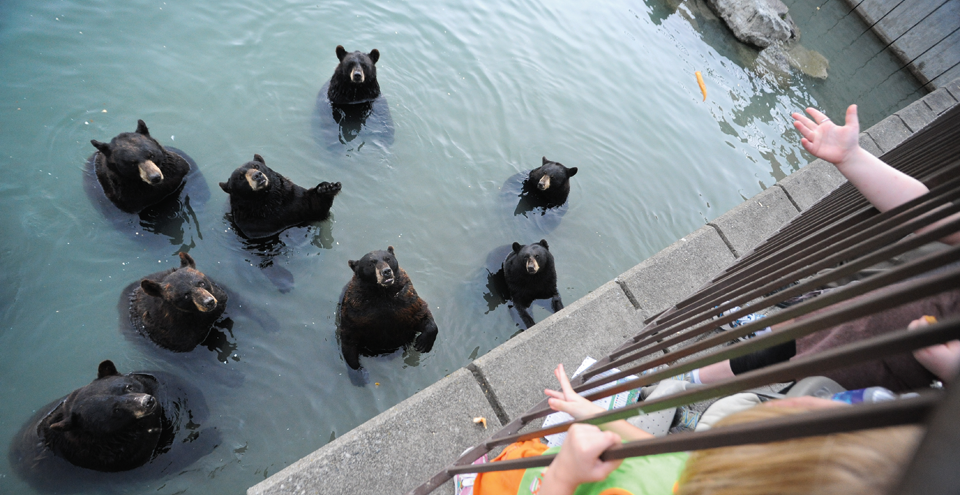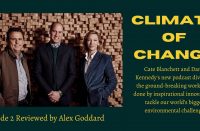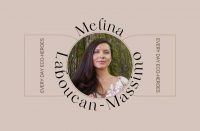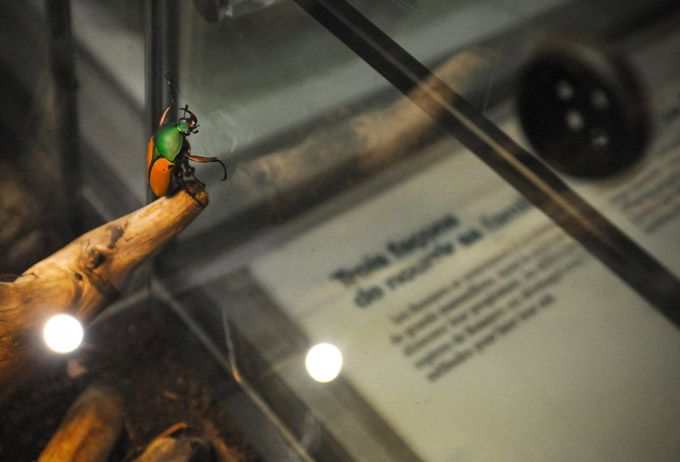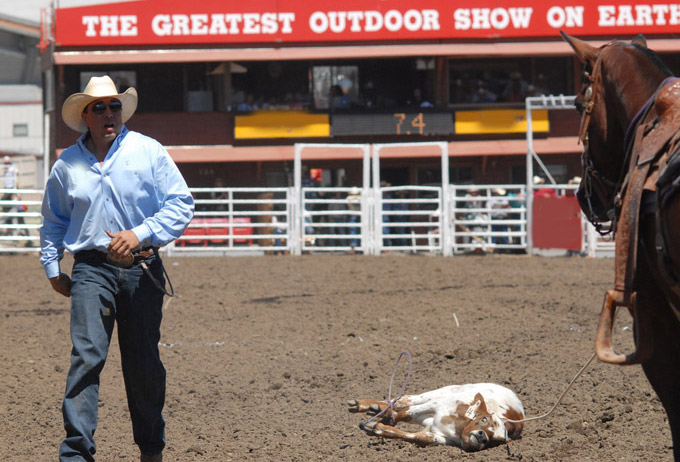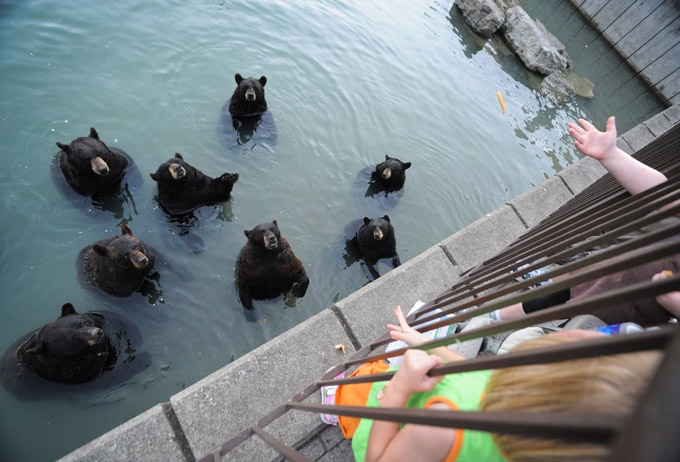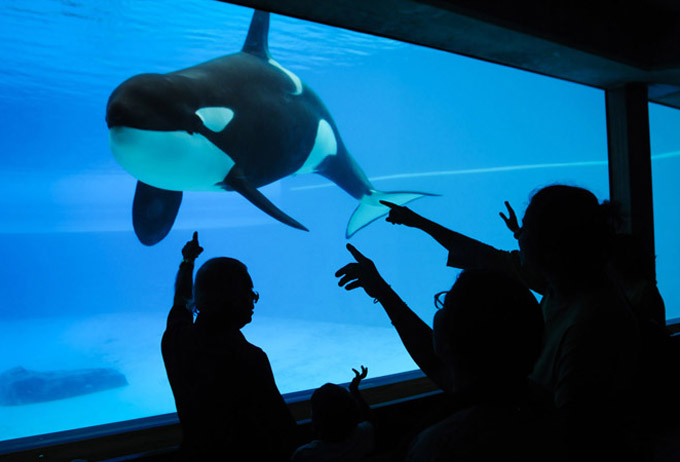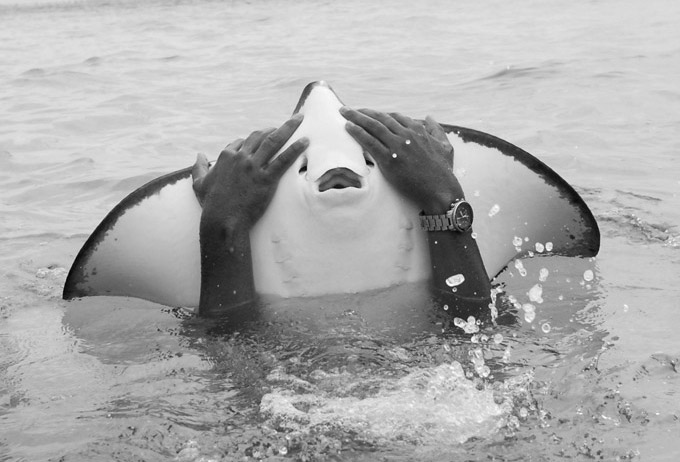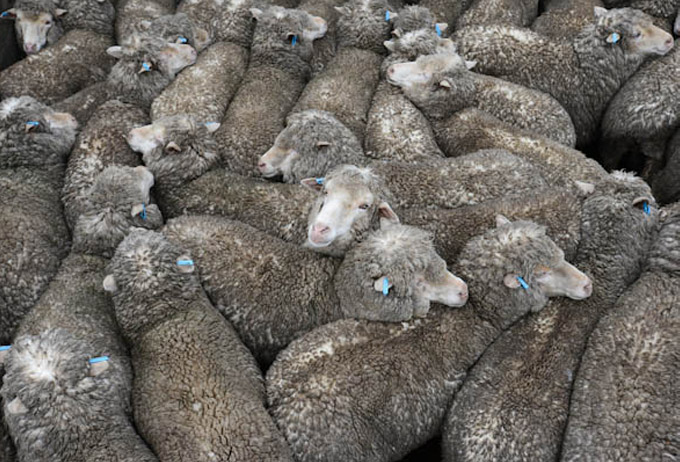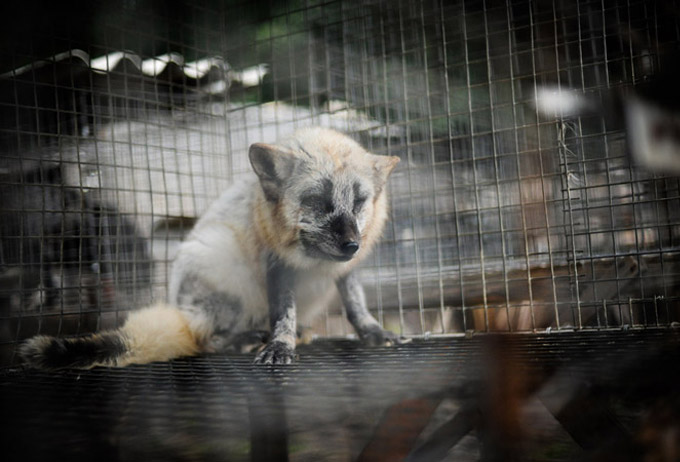A\J first featured animal rights photojournalist Jo-Anne McArthur’s work in a photo essay of pigs on their way to slaughter, in our Lifecycles issue in January 2013.
A\J first featured animal rights photojournalist Jo-Anne McArthur’s work in a photo essay of pigs on their way to slaughter, in our Lifecycles issue in January 2013. It was an incredibly impactful and well-received story, so later that year, we brought McArthur and filmmaker Liz Marshall to Kitchener-Waterloo for a screening of The Ghosts in Our Machine, which follows McArthur’s work documenting animal exploitation around the globe. Now she’s released a stunning book, We Animals, which is reviewed in our latest issue. The cover of A\J’s Sharing issue also features one of her photos.
While there are profound connections between our exploitation of animals in the fashion and entertainment industries and how we relate to nature more broadly as a society, that side of the animal rights cause doesn’t get as much attention in environmental circles as food issues, which are often reduced to a carbon footprint discussion in order to make it about “the environment” (we’re guilty of this ourselves).
To address this gap, we spoke to McArthur recently about the Fashion & Entertainment chapter of We Animals and how we can work toward a cruelty-free world. We’ve also selected a photo gallery of images from this chapter below.
This interview has been edited for length and clarity.
Laura McDonald: Why did you choose to open the book with this chapter, and why is it important for environmentalists to be thinking critically about zoos, stampedes, fur and other examples of animals-as-entertainment or accessory?
Jo-Anne McArthur: Animal protection should have been a part of the environmental movement from the beginning, but I think it was left behind because animals tie in so closely to our culture, habits, tastes and traditions. It’s easier to care about the destruction of the environment, but to take a stance on animal use and animal cruelty is to have to directly face our complicity, and to personally have to make changes to end that cruelty. People like the taste of steak. People like honey garlic wings and leather shoes. We’re also fascinated by the sight of live gorillas in zoos or performing elephants in circuses. We’ve been taught that all of these things are normal, and our right. Seeing otherwise requires a removal of some pretty big blinders, and some work on our part.
By starting the We Animals book with a photo of a bug, I’m trying to rattle speciesism at its roots, and get people to see immediately that the book isn’t just introducing us to the pleasing megafauna we all want to see. The book’s first statement is that all animals are sentient and deserving of respect. Yes, even beetles.
We Animals starts with a chapter about our use of animals for amusement and edification because it seems a more benign use of animals on our part. I wanted to challenge that from the get-go, and then ease the audience into the more graphic side of We Animals. Chapter one gets us to look not just at use and abuse of animals, but to find new significance in our sharing of spaces.
LM: You acknowledge in the book that zoos often have good intentions – getting kids to care about animals, endangered species protection – but ultimately you argue that the negatives outweigh the positives. Have you come across a zoo or other facility that does things better than others? Are there alternatives to zoos that accomplish the same goals in less harmful ways?
JM: I do think that it’s important to draw attention to the negatives; they need to be acknowledged, discussed and changed. All zoos can improve the habitats and emotional states of the animals they keep. The zookeepers that I know love the animals in their care. Until recently, I would have argued that everyone at the zoo wants what’s best for them, but the zoo as an institution doesn’t make “what’s best for the animal” a priority. A case in point that rocked the world recently is the killing of a young giraffe in a Denmark zoo because he was considered surplus; his gene pool wasn’t a good fit. The killing of this beautiful animal is a travesty and shows that zoos do not value individuals – unless, of course, there is a newborn member of a charismatic species, in which case they can leverage the birth to increase visitor numbers. Ultimately, zoos are for-profit institutions. They are not built for the benefit of the animals.
Sanctuaries, on the other hand, are. There will almost inevitably be a need to keep some animals in captivity, because they have been injured, need treatment, need shelter or can’t be released into the wild. I think that in those cases, it’s acceptable to keep animals. Sanctuaries do that. They provide a space and care for animals in need, and they do their best to meet the needs of the animals and create the best possible life for them. The individuals matter. The animals in sanctuaries are not bred in order to be put on display, unlike zoos where the goal is to have the animals on display to humans.
Zoos entrench our objectification of animals. Rather than teach us, first and foremost, if we are to eradicate speciesism, that we should do unto all others as we would have them do unto us, they teach us that animals in zoos are “other,” apart from us, there to teach us, to entertain us, and not as individuals with agency.
LM: Fur’s popularity seems to have declined, but your photos of a Swedish mink farm show that there’s certainly still demand – and now we’re seeing an increase in fur purchases just from one celebrity appearance in a fur coat (Joe Namath at the Superbowl), which suggests that shame and public disapproval have a strong role in keeping people from wearing fur, not just actual concern for animals. Obviously faux fur is a better option, but it still fails to challenge the idea of animals as accessories on a fundamental level. Is that something that you’re seeing?
JM: Actually fur is on the rise, not on the decline. And though China is the main importer of fur, we are seeing it absolutely everywhere in Canada and Europe. Public shaming does work, more so than actual concern. Making fur uncool is what needs to happen. Such was the case with the decline of the ivory trade in the 80s. There was a chain of really effective anti-ivory marketing campaigns, done by animal welfare groups and bolstered by celebrities, which was an instrumental part in the disappearing market for ivory. Fur saw a decline in popularity for a while as well, but was cleverly brought back through effective and subtle marketing, and through use as “trim” instead of full coats. Now, fur is unabashedly everywhere. It’s discouraging.
LM: I have a question from a reader who has an acquaintance who’s fairly passionate about one aspect of animal rights (veganism) but is indifferent or oblivious to the problems with aquariums. Do you have any tips on effectively pointing out that dissonance to someone you don’t know very well?
JM: This sort of discourse can be tricky because it can become impassioned, heated and sound judgmental. Getting people to connect all the dots can be hard. Everyone’s on their own journey with this, and for me the idea is to share information without judgment, and with openness and joy. It sounds like the friend referred to here is doing many great things for animals. Keep celebrating what people are doing, and cheerleading the changes they make. People respond well to positive feedback.
LM. Two of our interns are wondering how you cope with seeing this type of abuse on a regular basis. You’re literally staring it in the face every day, while most people rarely have to think about or acknowledge how we collectively treat animals. Are there particular things you do or think about to keep motivated?
JM: Everyone handles seeing these sorts of traumas differently. I think there are good barriers that we put up, and unhealthy ones too. Burying our heads in the sand, or turning to drugs and all the things we do to mask our pain aren’t really good for us in the long term.
I work at acknowledging that things are really bad, but focusing on change, focusing on the good. I’ve suffered from PTSD and had a few close burn-outs, and have learned to continually work at not wallowing in that sadness – the sadness of so many suffering at our hands. So I try to get enough sleep, eat well, drink lots of water, and do things that make me happy like reading, biking, exploring, being with my loved ones. Whatever makes you happy, do it. There are so few people working to improve the lives of animals. They need each and everyone one of us; they can’t afford to have us burn out.
A great book about this is Aftershock, by pattrice jones (from Lantern Books). I recommend it to every compassionate person who is traumatized by what’s happening to animals and our world. It offers great advice and coping techniques.
LM: Is there anything else you want people to keep in mind when considering animal rights issues from an environmental perspective?
JM: I want people to just start being aware of animal use. When you start seeing it, it’s hard to stop. From a micro-perspective, you’ll see “spare ribs” advertised everywhere. They are pigs. You’ll see leather shoes. They are cows. If a product doesn’t have a cruelty-free logo on it, it likely means that animals were kept in labs, and tested on, for the product you’re looking at. You’ll see whey in your salt and vinegar chips. That’s dairy, an industry in which veal production is inextricably entwined. And “veal,” of course, is the body of a young calf, taken from his mother and kept in a crate, to be consumed as soft meat.
Put on a macro lens and you’ll see the environmental devastation caused by the meat industry. The tailings ponds of feces seeping into the ground and our water, along with the antibiotics and hormones that are given to the animals we eat. You’ll notice the ever-soaring carbon emissions as a direct result of our massive overconsumption of animals. You’ll see forests in the amazon being destroyed at an unprecedented rate to make room for grazing cattle.
We’re all interconnected – the Earth, the animals, our habits. To harm others is to harm ourselves, but we don’t seem to realize this. We can, and need to, bring all of these issues together, and teach each other to be kinder and more careful stewards of the Earth.
“The animals of the Earth exist for their own reasons”, as Alice Walker famously said. “They were not made for humans any more than black people were made for whites or women for men.” And the Earth is here for us on loan, from future generations who need to live here without pollution and without cruelty. The time has passed for Band-Aids; change and action, for both the animals and the Earth, are needed now.
Photo Gallery

Laura is a past A\J managing editor. She has an MA in Communication Studies from Wilfrid Laurier University, is an organizing aficionado, lackadaisical gardener, and former musical theatre producer. @inhabitings


